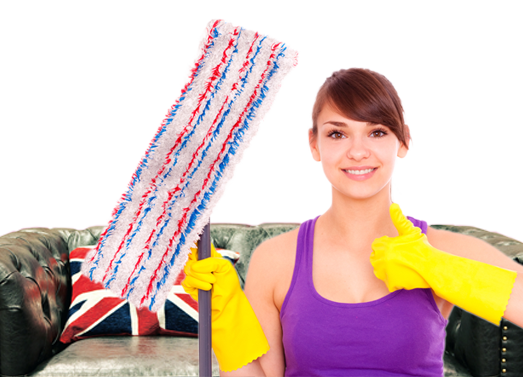Discover Tips for Safely Washing Velvet Curtains and Everlasting Beauty
Posted on 22/05/2025
Discover Tips for Safely Washing Velvet Curtains and Everlasting Beauty
Velvet curtains lend a sense of grandeur and sophistication to any living space. Their rich texture and luxurious sheen make them a favorite for both modern and traditional decor. However, these opulent draperies require special attention to maintain their beauty. If you want your velvet curtains to remain striking for years, proper care--especially washing--is essential. In this comprehensive guide, you'll discover tips for safely washing velvet curtains and prolonging their lasting beauty.
Understanding Velvet Curtains: Types and Characteristics
Before you begin any cleaning process, it's crucial to understand what makes velvet so distinctive. The fabric's unique qualities demand thoughtful handling during any cleaning routine.
What is Velvet?
- Velvet is a woven tufted fabric where the cut threads are evenly distributed, giving it a distinctive soft feel known as the "pile."
- It can be made from silk, cotton, viscose, polyester, or a blend. Each variant has distinct cleaning needs.
- Genuine silk velvet is delicate and expensive, while polyester velvet is more resilient and affordable.
- The pile direction and density determine how the fabric reflects light, adding to its allure.
Why Is Velvet Tricky to Clean?
- Velvet's pile is susceptible to crushing, matting, and marking if not cleaned properly.
- Water exposure can leave spots and distort the fabric, particularly with natural fibers.
- Improper cleaning can lead to color fading, shrinkage, or a permanent loss of texture.
Knowing your velvet type is critical. If you're unsure, check the curtain's care label or contact the manufacturer.

Essential Pre-cleaning Steps for Velvet Draperies
Preparation is half the battle in keeping your velvet curtains stunning and ensuring everlasting beauty.
Read the Manufacturer's Care Label
- Always begin by reviewing the care label. It outlines the safest cleaning methods for your specific fabric.
- Labels might advise dry clean only, hand wash, or machine washable.
Test for Colorfastness
- Dab an inconspicuous area with a damp white cloth to check if any dye transfers.
- If color bleeds, restrict cleaning to gentle surface methods or professional care.
Vacuum Dust and Debris
- Use a vacuum with an upholstery attachment to remove surface dust and pet hair.
- Brush lightly in the direction of the pile to avoid crushing the fabric.
How to Wash Velvet Curtains Safely
Let's discover the safest techniques for washing velvet curtains at home or with professional help. The steps below apply to most types, but always check the care label before starting.
Spot Cleaning Velvet Curtains for Minor Stains
- Mix a mild detergent with lukewarm water--never use hot water on velvet.
- Dip a soft, white cloth into the solution. Wring it out well to avoid drenching the fabric.
- Blot the stained area gently; never rub or scrub.
- Blot with a dry towel to absorb moisture and avoid watermarks.
- Allow the fabric to air-dry fully, then lightly brush the pile to restore its texture.
Hand Washing Velvet Curtains
- Suitable for cotton or polyester velvet marked as hand-washable.
- Fill a bathtub or basin with cool water and a gentle detergent.
- Submerge one curtain panel at a time and gently agitate by hand.
- Rinse thoroughly in cool water until all soap residues are gone.
- Press--don't wring--excess water out with a towel.
- Never soak velvet for extended periods.
Machine Washing Velvet Curtains
- Applicable for modern synthetic velvets only--check your care label!
- Use a delicate or hand-wash cycle with cold water and a mild detergent.
- Place curtains in a mesh laundry bag for extra protection.
- Wash each panel separately to prevent overloading and friction damage.
- Never use bleach or fabric softener.
Professional Dry Cleaning Velvet Curtains
- For "dry clean only" velvet, silk velvet, or antique drapes, always seek professional services.
- Professional dry cleaners have the experience and solvents necessary to clean without moisture damage.
- Ask about their experience with velvet and if they offer on-site drape cleaning.
Drying and Restoring Velvet Curtains: Tips for Everlasting Beauty
Drying velvet correctly is as important as the washing process itself. Improper drying methods can lead to crushing, color loss, and unsightly wrinkles. Follow these key drying techniques for preserving the striking look of your velvet window treatments:
Air Drying Velvet Curtains
- Lay curtains flat on clean towels and roll to gently remove excess water--never twist or wring.
- Hang curtains from a sturdy rod or outdoor clothesline, making sure the panels are fully supported and not bunched.
- Keep drapes out of direct sunlight; this prevents fading and color degradation.
- Allow the curtains to air dry fully before rehanging them.
Never Tumble Dry Velvet Curtains
- Tumble dryers can crush the pile and shrink the fabric.
- Even the lowest heat settings may damage the fiber integrity.
Steaming and Ironing Velvet Curtains
- If wrinkles develop, use a handheld clothes steamer.
- Always steam on the reverse side, holding the steamer several inches away from the pile.
- Never press a hot iron directly onto velvet; instead, use a steamer or the steam burst feature.
- If using an iron, place a thick towel or cotton cloth between the iron and velvet, and use a low-temperature setting.
- Brush the pile gently upward to restore its natural sheen.
Preventative Velvet Curtain Care for Lasting Elegance
Routine care will keep your velvet curtains gorgeous and minimize the need for deep cleaning. Here are preventative steps to foster everlasting beauty:
- Dust or vacuum regularly to keep particles from settling into the pile.
- Rotate curtains every few months so they wear evenly and avoid fading from uneven sunlight.
- Use tiebacks to keep curtains open and minimize creasing.
- If your property is near heavy traffic or construction, close your windows to keep out dust and dirt.
- Consider lining your velvet drapes to reduce direct sun penetration and extend fabric lifespan.
Storing Velvet Curtains: Preserve Their Beauty Off-season
- Clean and dry completely before storing to prevent mold and mildew.
- Roll, rather than fold, your curtains to avoid creases and pressure marks.
- Store in breathable cotton bags in a cool, dry area--not in plastic, which can trap moisture.
Common Mistakes When Washing Velvet Curtains and How to Avoid Them
Many owners inadvertently damage their velvet window treatments through a few universal missteps. Avoid these pitfalls for timeless, captivating curtains:
- Skipping care label instructions: Disregarding the manufacturer's guidance can ruin sensitive velvet types.
- Using harsh chemicals: Bleach, standard detergents, and spot removers are too abrasive for velvet.
- Excessive water exposure or soaking: Oversaturating velvet disrupts the pile and causes watermarks.
- Drying in direct sunlight or with high heat: Both can cause fading and shrinkage.
- Rubbing, scrubbing, or wringing: This crushes the pile and leaves unsightly marks.
Eco-Friendly and Gentle Velvet Curtain Cleaning Solutions
If you're committed to sustainable living, it's possible to combine green habits with careful washing:
- Choose plant-based detergents free of dyes and perfumes.
- Use cold water to save energy and preserve fibers.
- Spot clean with vinegar and water (always patch test for colorfastness).
- Air dry to further reduce environmental impact.
When to Replace Velvet Curtains?
Even with the best care, velvet will eventually show signs of aging. Look for these signals that it's time to refresh your window treatments:
- Persistent stains or odors that resist cleaning.
- Severely faded, thinned, or bald patches in the fabric.
- Visible tearing or damage along the seams.
Fortunately, following these safe cleaning tips will extend the lifespan of your velvet drapes for many years.

Frequently Asked Questions About Washing Velvet Curtains
Can all velvet curtains be machine washed?
No, only synthetic velvets (like polyester or some blends) are typically safe in washing machines, and only on a delicate cycle. Always read the care label first. Natural fibers, such as silk or cotton velvet, often require hand washing or dry cleaning.
How do you remove wrinkles from velvet without damaging it?
Use a garment steamer several inches from the curtain's reverse side or gently steam with a hot shower. Avoid direct ironing.
How often should I clean my velvet curtains?
Vacuum weekly and spot clean as needed. Deep cleaning (washing or dry cleaning) is recommended once or twice a year or as directed by the care label.
What's the best way to revive flattened velvet pile?
Hold a clothing steamer or the steam from a boiling kettle near the flattened area, then brush the pile upward with a soft-bristle brush once the fabric dries.
Conclusion: Achieve Everlasting Beauty When You Safely Wash Velvet Curtains
Velvet curtains don't have to be intimidating to maintain. With proper care, including correct washing, gentle drying, and ongoing maintenance, you can preserve their luxurious appeal. Always consult care labels, clean gently, avoid direct heat, and protect from sun exposure to ensure your velvet window treatments remain a stunning focal point for years to come.
Remember, a little attention goes a long way toward achieving the everlasting beauty of your treasured velvet curtains.
Ready to give your velvet curtains the care they deserve? With these tips, you'll enjoy their timeless elegance, cozy ambiance, and glamorous style for many seasons ahead!





